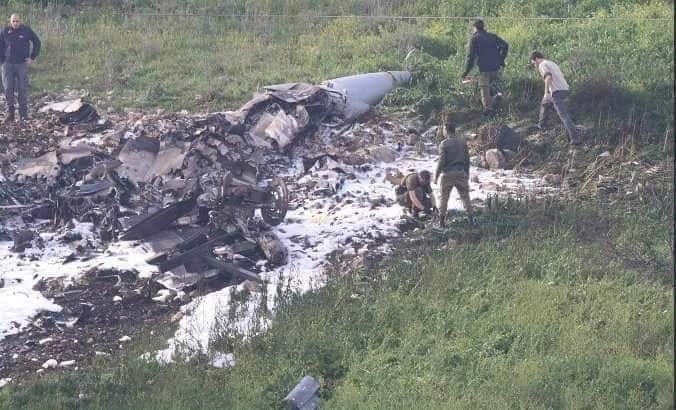Ukraine, Israel, Turkey, and the Gulf states are between the difficult equations and the bitter option
Today, the world is going through hard labor that will result in two children carrying the legacy of their parents, the East and the West.
Instead of trying to find an understanding with Russia and China, the United States and NATO insist on the confrontational approach that has recently been enshrined in violating their oral understanding with Russia on the tongue of George H. W. Bush and President Mikhail Gorbachev not to extend NATO towards Russia, or the countries of the former Soviet Union, in exchange for dissolving the Warsaw Pact and ending the Cold War between the two sides. This approach prompted Russia to create new political and military alliances to rise the East Axis against the West Axis again, as China, Iran and Syria among other countries do not represent mere interests, but rather the inevitable rise of an entire axis. In this short series we will concentrate on the key aspects of this confrontation, and in the first part we deal with the matter of the Axis of Resistance.
Syria
On 09 February 2022 Israel attacked Syria from the Lebanese airspace and the occupied Syrian Golan resulting in the martyrdom of one soldier and the wounding of five others, while several citizens’ properties were damaged in the “Qudsiyya” area, Damascus countryside.
Syrian Ministry of Defense: “At 12:56 a.m., the Israeli enemy launched aerial aggression with bursts of missiles from the direction of southeastern Beirut. Then at 01:10 a.m., the Israeli enemy launched another aggression with surface-to-surface missiles from the direction of occupied Syrian Golan targeting some points in Damascus vicinity. Our air defenses intercepted the Israeli missiles and downed some of them.” Adding, “One soldier was martyred and five others were wounded due to the aggression, in addition to material losses.”
The analysis of this attack and the attacks that followed shows a change in the political and military situation in the region, which contradicts what the Israeli media promotes, as it also shows the decline of the Israeli military capability and the bad situation it has reached. The Israeli 122 Squadron reconnaissance activity that preceded the attack focused on southern and central Syria before going completely off radars except for the Oron plane, which is one of the most advanced intelligence planes of its kind at the present time.

The quick and accurate response of the Syrian air defenses this time has completely thwarted the first wave of missiles launched by four F-16 tactical fighter jets from the Lebanese airspace. The Pantsir and BUK-M2 systems shot down all the missiles, while the density of the S-200 missiles (modified by Syrian Scientific Research Centers) forced the Israeli pilots to withdraw towards the sea and Palestine, and overcame the Iron Dome. Sirens were activated and several explosions were heard from Wadī ‘Araba in the south to the north of occupied Palestine, where one of the missiles caused a fire near the settlement of “Chumash” and the village of Burqa in Nāblus, according to the Palestinian Al-Jarmaq news website, quoting Israeli sources.
Due to the failure of the first strike and the inability of the Israeli air force to launch a second one, Israel had to complete its attack by launching 10 surface-to-surface missiles from the occupied Golan, targeting Damascus International Airport, aḍ-Ḍumayr Military Airport, air defense batteries, and the scientific research center in Ğamrāya, northwest of Damascus, which is one of the most important centers for developing missile capabilities.
Syrian air defenses downed 80% of the hostile missiles on the axes of Damascus International Airport road, Damascus-Darā‘ highway, the vicinity of ad-Dīmās, Ğamrāya, Ḥarasta and Qudsiyya, but some of them hit one of the S-200’s guidance and illumination radar and a launcher near the aḍ-Ḍumayr air base, along with two ammunition depots west of the Scientific Research Complex, in addition to severe damage to a depot within the Complex.
The Israeli aggression on February 16 was preceded by a squadron of Israeli warplanes that penetrated the Lebanese airspace for a few minutes without launching missiles for fear of provoking the S-200 missiles that penetrated the Iron Dome four times in less than two years, in addition to their attempt to locate the Syrian mobile air defense batteries Pantsir and BUK-M2, then Israel launched Extra surface-to-surface missiles 306 mm, targeting a site south of Damascus.
The same method was repeated twice later when Israel targeted sites in Qunayṭra on February 23, and Damascus International Airport on 24 February, but this time the Israeli warplanes were flying hysterically over Lebanon before the attacks for several days, while the Nahshon 122 was intensively active.
Ḥizb Allah
At least three Israeli drones were downed in Lebanon since the Resistance announced activating its own air defenses, which significantly declined Israel’s espionage activity. Few months may pass without spotting an Israeli drone in some areas such as the Biqa‘a and the south, which forced the Israeli warplanes and Nahshon squadron to carry out espionage missions.
“The time is over for an Israeli aircraft to bomb in Lebanon while the entity remains safe…From now on, we will face the Israeli drones in the skies of Lebanon and we will work to bring them down, and let the Israelis take note of that.”
Secretary-General of Ḥizb Allah, as-Sayyid Ḥasan Naṣr Allah, said on 25 August, 2019.
After the escalation of Israeli attacks at the end of 2021, at the rate of one raid every week, the attacks stopped from 27 December till 30 January, but the suspicious air activity of the entity did not stop. Activists reported Israeli warplanes flying over Lebanon without attacking Syria in that period.
At the dawn of 12 January 2022, a squadron of Israeli warplanes reached northern Lebanon and returned. The Russian military police also conducted patrols in Lattakia’s port on 17 January 2022, with Nahshon squadron tracking an unknown target on the Mediterranean coast.
لو معي نقيفة كنت نزلتن ليك ما أقربن pic.twitter.com/yc63Vtz3VA
— HUSSEIN SROUR (@HUSSEINSROUR) January 24, 2022
Contrary to what some think, the Israeli planes were not retreating at the last moments, but were looking for something in Lebanon itself. In addition to US intelligence leaking information about Ḥizb Allah’s acquisition of Iranian-made Bāvar-373 and Russian-made Pantsir, Israeli intelligence received information that qualitative weapons had already arrived in Lebanon from Syria through tunnels, which raised fears among the Israeli leadership.
🇺🇸 US intelligence indicates that Hezbollah may has two air defense systems and could be activated soon:
— KI Data (@KiIntel) September 30, 2021
🇮🇷 Bavar-373
🇷🇺 The Pantsir pic.twitter.com/MiDyLvvqhO
What really indicated the strategic change was as-Sayyid Ḥasan Naṣr Allah’s answer, in an interview with al-Ālam TV on 08 February 2022 to a question about the resistance’s possession of the Russian SA8 and SA17 air defense systems. This was also reported by the Information Division of the Israeli Army Staff. Ḥasan Naṣr Allah said: “Everything is feasible.. everything is possible.. everything is probable.. at the end, the resistance is considered to possess any weapon that would enable it to defend this country and this people against the Israelis.” He also confirmed: “There are certainly hidden things to surprise the enemy in any upcoming war.“
Then the “Ḥassān” drone operation in all its details came to confirm all of the previous, showing Israel’s weakness and its defensive ability decline, especially after what as-Sayyid Ḥasan Naṣr Allah has said about the resistance’s ability to develop thousands of missiles into precision missiles and its ability to manufacture drones.
To remember
On the morning of 10 February 2018, eight Israeli F-16 attacked the Syrian T4 airport, targeting the control tower and the ground-based controller of a drone that had previously penetrated Israeli airspace that day. The troops of the 16th Air Defense Regiment in the Syrian Arab Army, stationed in the vicinity of aḍ-Ḍumayr Military Airport, were able to carry out an air-tight ambush for the formation. The monitoring and radar lock-on operation on the formation succeeded. Ten S-200 missiles were launched and one F16-Sufa was downed at a depth of 60 km Inside occupied Palestine, another plane was hit and two pilots were seriously injured.
This operation changed the rules of engagement and ended the continuous penetration of the Syrian airspace by Israeli warplanes, forcing them to launch their attacks from the sea, the Lebanese airspace, or northern Palestine. The only violation of the Syrian airspace was from the at-Tanf area through the Jordanian airspace, and it was retaliated by striking the at-Tanf base itself.
Today we are witnessing a new change in the rules of engagement and a greater Israeli decline.

Conclusions
As the Axis of Resistance is fighting all together at once on several fronts, the previously mentioned events are not far from Iran, Yemen and the Gulf states either.
The immediate Yemeni recognition of the independence of the Donetsk and Lugansk republics will shed light on the Russia-Yemeni relation’s strength and might negatively affect Russian relations with the Gulf states, which will soon face difficult choices as well. Their continued aggression against Yemen will only lead to an inevitable defeat and huge losses at the strategic level, including the final loss of the Bāb al-Mandib Strait in favor of the al-Ḥūtīs, while stopping the aggression will lead to the same result, but with fewer losses, which will also affect their normalization with Israel. The UAE, which emphasizes the “strength of strategic relations with Russia”, will be the first survivor of the storm of change by maintaining diplomatic relations with everyone, becoming the key to solving the conflicts of the Gulf states and other related conflicts in the region.
With the progress of the Iranian nuclear deal negotiations and the failure of besieging Russia in Ukraine, the project against Syria also met a dead end. Israel, the US, and NATO will increase their attempts to strangle the countries of the eastern axis economically and politically to destabilize internal security. Especially in Syria, to create a buffer zone that preserves Golan’s security, and even secures a larger expansion space in the future. However, this pressure may not be feasible anymore. With the inability of the US and Israel to curb the escalating quantitative and qualitative military development of the countries of the Resistance Axis, Israel finds itself in a dangerous existential dilemma. It is stuck in an internal political-military conflict between the “war camp” and “no-war camp”. While the two options are worse than each other, Israel may find that a wide-scale attack on its timing could be better than waiting for the Axis to launch a war on its timing. Israel is trying to drain what it can of the Syrian defense capabilities to create the opportunity of launching a swift strike with rapid progress. This demonstrated by the nature of the military targets of the repeated Israeli strikes, but today Israel is also facing an escalating Russian danger in the Middle East that may equal the danger of the Resistance Axis.
To be continued…



